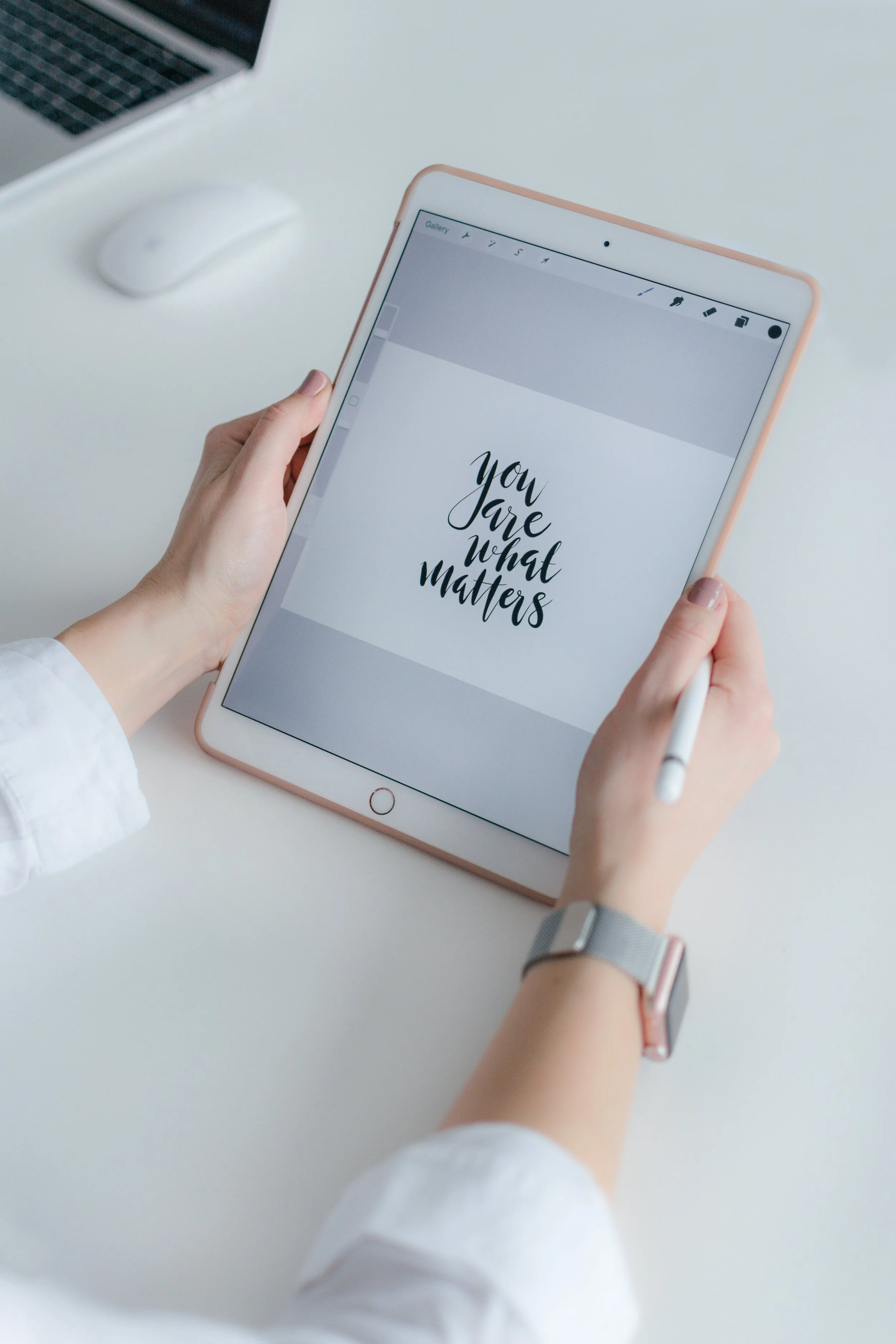What is Digital Planning?
Digital Planning is the process of recording your daily schedule and notes in a digital format (re:interactive PDF) rather than a paper format.
Digital planning is super customizable to each person. What it is to you is as boundless as your imagination is.
Digital planning can be your yearly calendar, your monthly goal, your daily to-do’s. It can be your vision boards, your year in photos, your health trackers. It can be your recipe book, book reviews, and even your journal.
Truly, digital planning is as boundless as your imagination!
What do you need to Digital Plan?
There are 4 items you need to Digitally Plan:
A tablet/smartphone,
A note-taking app,
A digital planner,
And a stylus.
If you don’t have these items yet, I won’t lie, it can be expensive to start. However, if you are someone who has used and purchased a planner year after year, digital planning can be a great investment and there are ways to make the upfront costs more achievable.
Some ideas to make your digital planning more affordable include:
Purchasing a tablet secondhand
Instead of buying the newest tablet available on the market, choose one that is a few models back
The tablet doesn’t have to be a name-brand product, research other brands and see how customers like their tablets.
When I first started DIgital Planning, I knew that it would be an investment. The pros really outweigh the cons in the long term for me. Digital Planning is something that brings a lot of fulfillment and structure to my life.
How do you do it?
There are three steps to Digital Planning:
Make sure you have the right equipment.
Choose a planner that fits your needs and familiarize yourself with a Notetaking app.
Be consistent and start slow.
Before you even start looking at the different types of planners out there, do a little bit of self-reflection. Identify what you want to get out of the experience.
Do you want to plan your upcoming travel adventure? Are you looking for a way to track your appointments and events? Do you have some goals that you want to achieve THIS YEAR? Are you building up a business and need tools to track your analytics? There are so many options so really dive deep into what you are looking to get out of it and why it’s important to you.
Identifying these 2 questions (What and why?) will make the transition to digital planning so much easier and it will also be a fantastic way to ground your digital planning practice.
Tips and Tricks for Beginners
I must not lie. (Sneaking in a little HP reference :D ). It’s easy to get overwhelmed when just starting. So here are a few tips:
Start by getting comfortable with the planner you chose.
Where is everything located? Which pages will you be using most often? Do you know how to access the hyperlinks? Do you understand how to use the note-taking app? Where are the highlighters? What size pen do you prefer? Etc.
2. Set aside some time in your day for your planner. Start to think about ways where you can begin to develop routines. For example:
I like to plan my week out in advance on Fridays.
Every morning, I will spend 5 minutes jotting down things I want to get done each day that are aligned with my personal goals.
At the start of the month, I like to check in with my yearly goals and my past month’s goals and set intentions for the month I just entered.
Find ways where you can naturally incorporate Digital Planning into your lifestyle.
Why do you do Digital Planning?
Digital Planning is a great way to be more eco-conscious. You are moving away from the paper industry and single-use mindset.
There is greater flexibility when Digital planning vs paper & pen planning. If you make a mistake, you can correct it without white out. If you decide to move around appointments, you can do that with a couple of quick swipes.
What are the benefits?
On top of the benefits of planning, you get the added benefits of being more thoughtful with the impact you are making.
Reducing paper consumption
Planning reduces stress
Promotes positivity
You can focus on what you want your life to be
Be more efficient
Be environmentally friendly
Greater control over your schedule
More flexibility with changes and shifts
can act as a digital archive of your life




